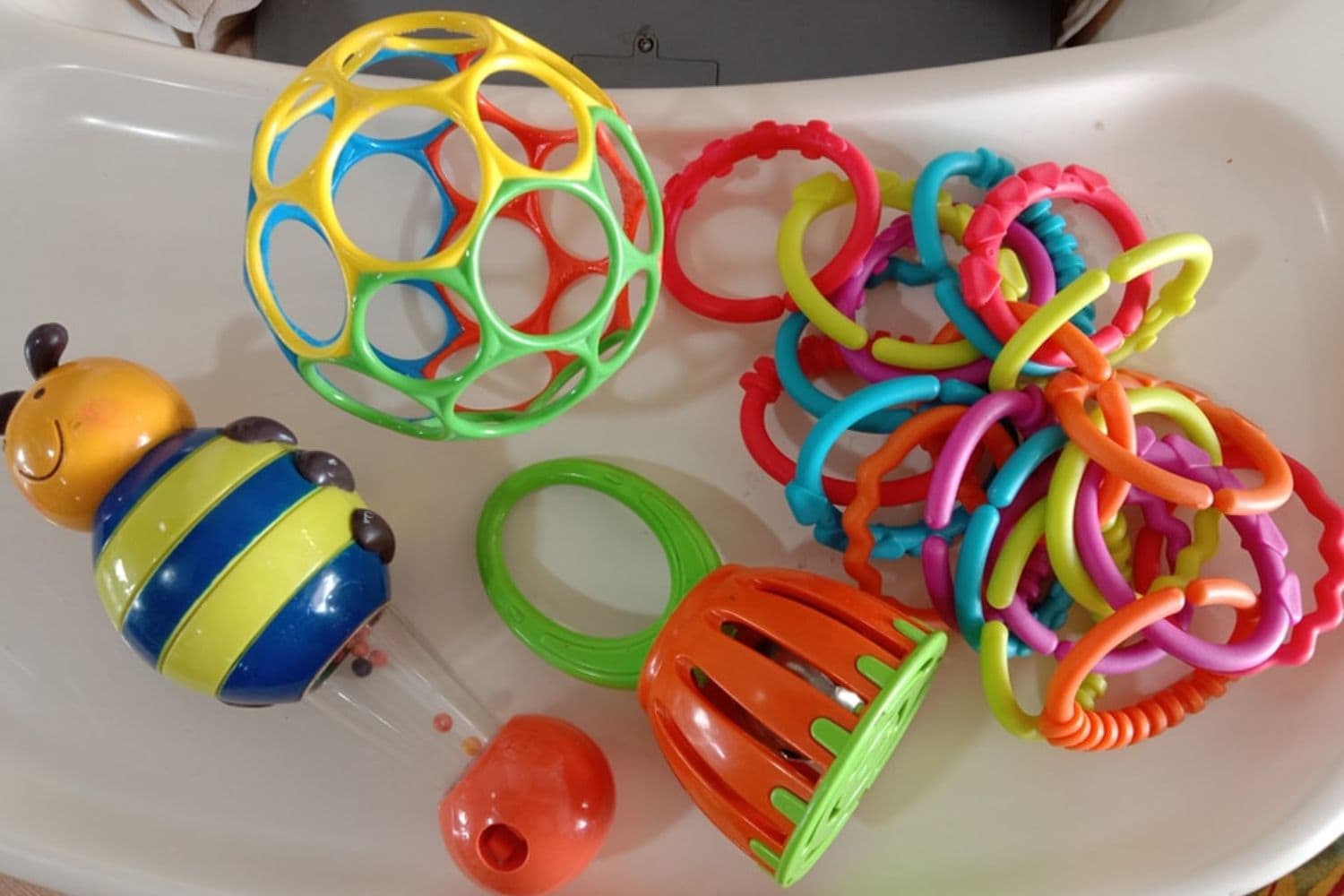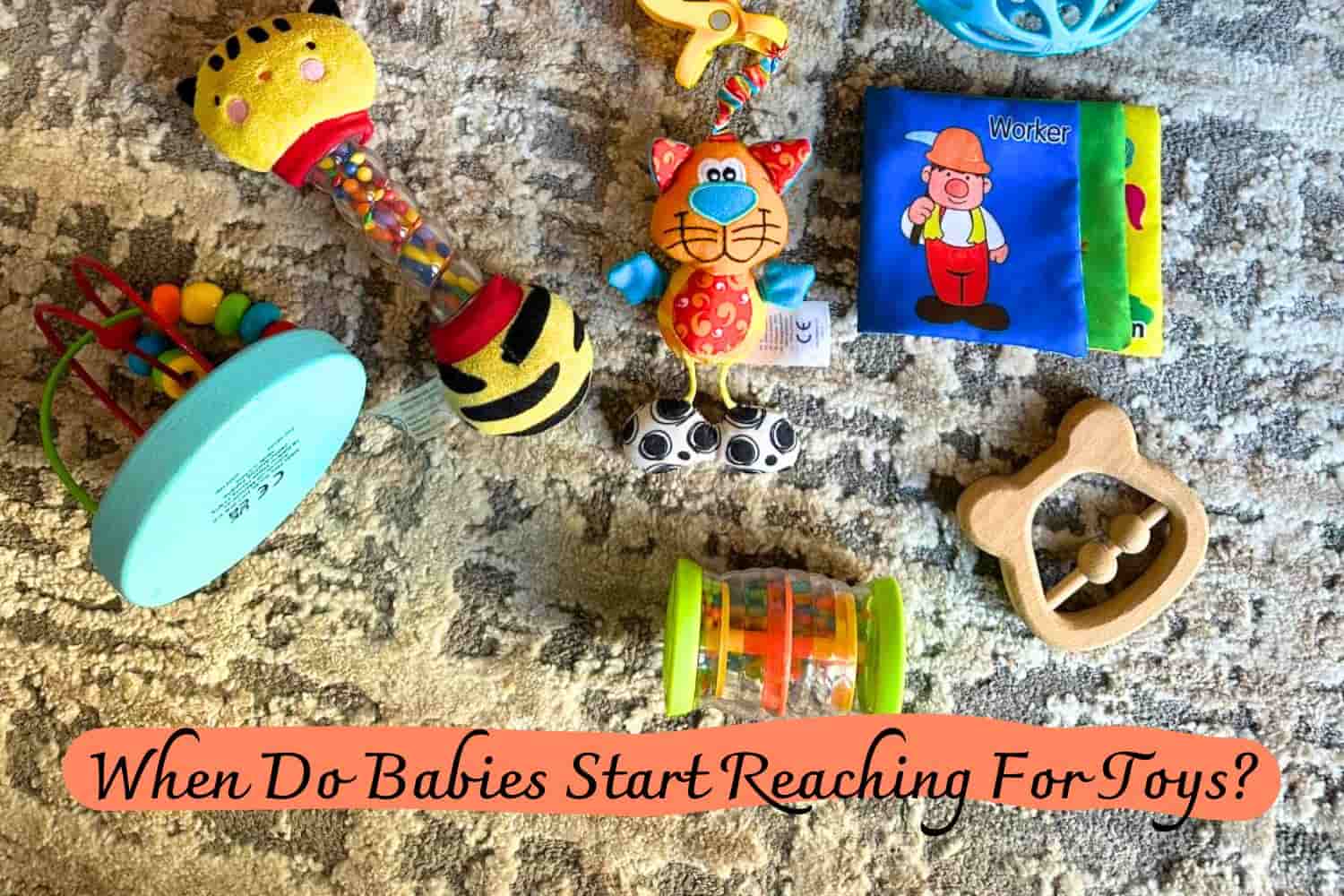Wondering when do babies start reaching for toys you’ve got in their play area? Find out the average timeline here, as well as tips to help encourage this milestone.
When Do Babies Start Reaching For Toys?
Are you eager to witness your baby’s curiosity and development as they reach for the toys surrounding them? Watching a young one take in their environment through exploration can be incredibly rewarding.
From as early as 3 to 4 months old, watch as they bat at objects and gain the ability to hold and shake toys. By 6 months old, witness their incredible growth as they reach for and grab items they desire. Help nurture their grasping skills by keeping soft toys conveniently within their reach.
Understanding when do babies start reaching for toys, and what milestones this milestone marks, is key in understanding your little one’s growth.
If you are expecting or have an infant in your life, read on to learn more about when to expect this exciting moment!
When Do Babies Start Reaching For Toys?
Most babies start reaching for familiar objects around the age of 4 months. However, some babies may begin reaching for toys, pets, and their caregivers as early as 3 months.
Once your baby has mastered reaching, you can expect them to start grabbing objects as well. As their fine motor skills develop, they will learn to grab toys that are held close to their fingers. By the time they reach 6 months, the majority of babies can grab items and pass them from one hand to the other.
Discovering How Babies Develop and Master the Art of Reaching, Grabbing, and Holding

From the moment they are born, babies possess a natural reflex to grasp objects. Watch in awe as your little one wraps their tiny fingers around yours with astounding instinct. However, for the first eight weeks, these movements remain involuntary.
During this initial stage, your baby’s hands will primarily be held in a clenched fist. But fear not, soon they will purposefully open and close their hands as they begin to examine and understand their surroundings. Prepare to witness their attempts at grasping soft objects, such as cuddly stuffed animals.
Moving forward to the three-month mark, your baby may still struggle to accurately grab what they desire. However, they will eagerly bat at toys over and over, demonstrating the emergence of their hand-eye coordination. Notice how their curiosity grows as they start to notice items they would love to get their tiny hands on.
As we reach the four to eight-month milestone, you’ll be amazed to observe your baby’s development. At four months old, they should be able to grasp and shake a toy if you place it in their hand. By six months old, their reaching and grabbing skills will improve tremendously, enabling them to acquire desired toys. Additionally, they will begin picking up objects and promptly placing them in their mouths, so remember to keep small items out of their reach to ensure safety.
If your baby has also started eating solids, it’s important to understand that they won’t be able to hold a baby spoon steady just yet. But don’t worry, they will make attempts. This is the time when your little one can rake objects towards themself, as well as start transferring items from one hand to the other. However, grasping smaller objects like peas won’t happen until they develop the necessary finger dexterity for the pincer grasp, which typically occurs around nine months.
As we enter the nine to twelve-month range, you will be astounded by your baby’s progress. Now, they can easily pick up objects, and their preference for using their left or right-hand starts to emerge. However, determining their true left- or right-handedness will not be possible until they are two or three years old.
At this stage, your baby is refining their pincer grasp, mastering the ability to pick up even the tiniest of objects between their thumb and forefinger. Their coordination has improved, allowing them to experiment with using a spoon or fork during mealtime. Although they may still favor using their fingers, guiding them to hold the utensil in one hand while using the other to enjoy their meal will encourage their development. Remember, practice makes perfect, so allow them several attempts at every meal to solidify their newfound skills.
Witness the astonishing journey of your little one as they discover and conquer the art of reaching, grabbing, and holding objects. These cherished moments will leave you in awe of their incredible development and resilience.
Conclusion
In conclusion, when do babies start reaching for toys is a question that every parent should ask. Babies are naturally curious and drawn to the colors and shapes of toys, so it’s important to take steps toward encouraging their development with fun activities.
By introducing comfortable and age-appropriate toys – like rattles and colorful objects – as early as possible, you can help them begin developing the skills necessary for reaching out.
Additionally, attaching interesting textures and objects will further support hand-eye coordination improvement and overall mental development.
It’s recommended that from 6-8 months onwards parents regularly present a wide variety of interactive experiences, such as story time and interactive music or educational games.
As your baby grows they’ll continue to reach out for more challenging toys, so make sure to be prepared with a variety of new items to satisfy their insatiable curiosity. There’s no greater joy than watching your little one grow up with guidance along the way!
Thanks for reading our article. If you want to know more information, visit our website here.
Read more:
When do babies start grabbing things?

